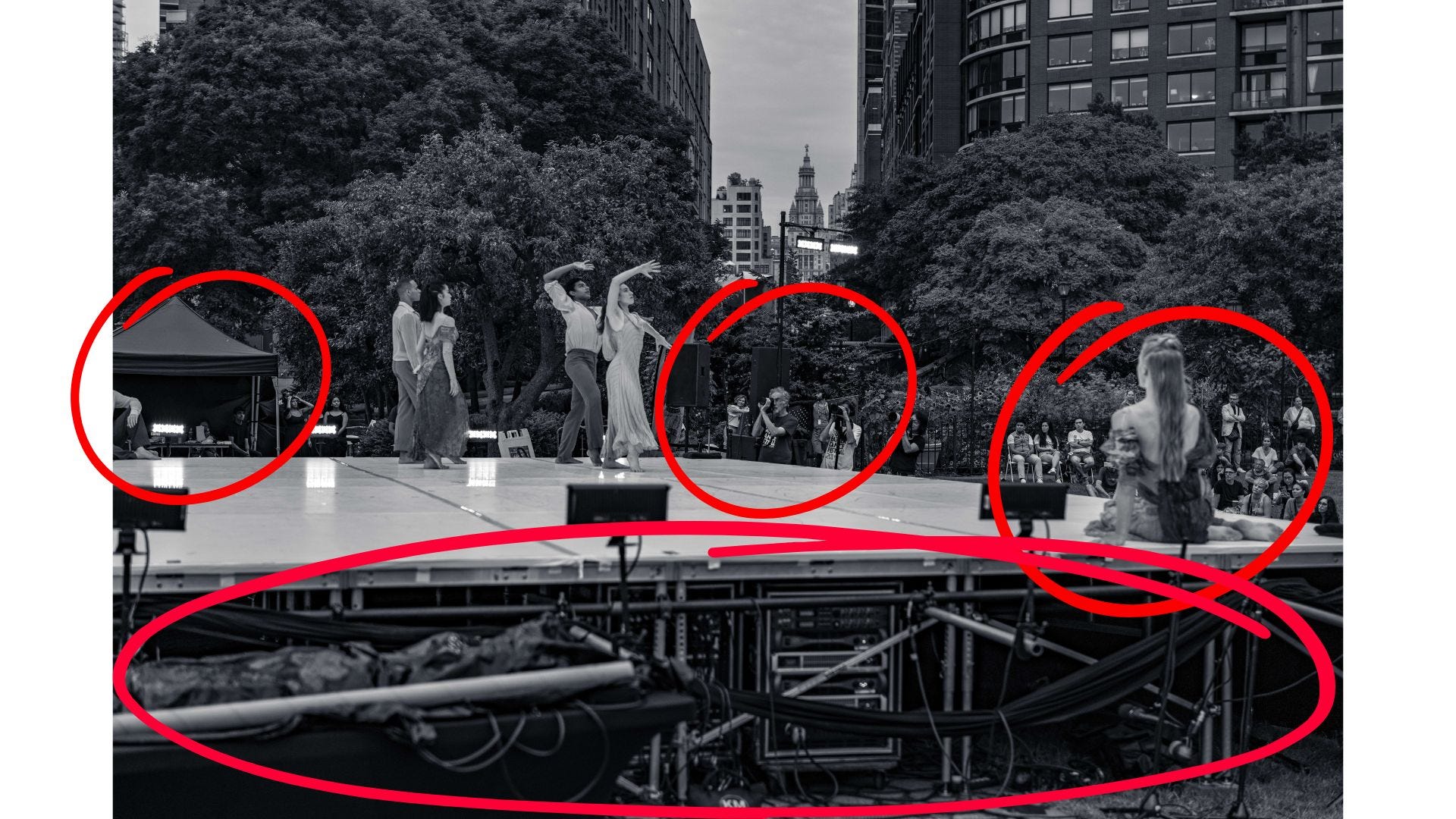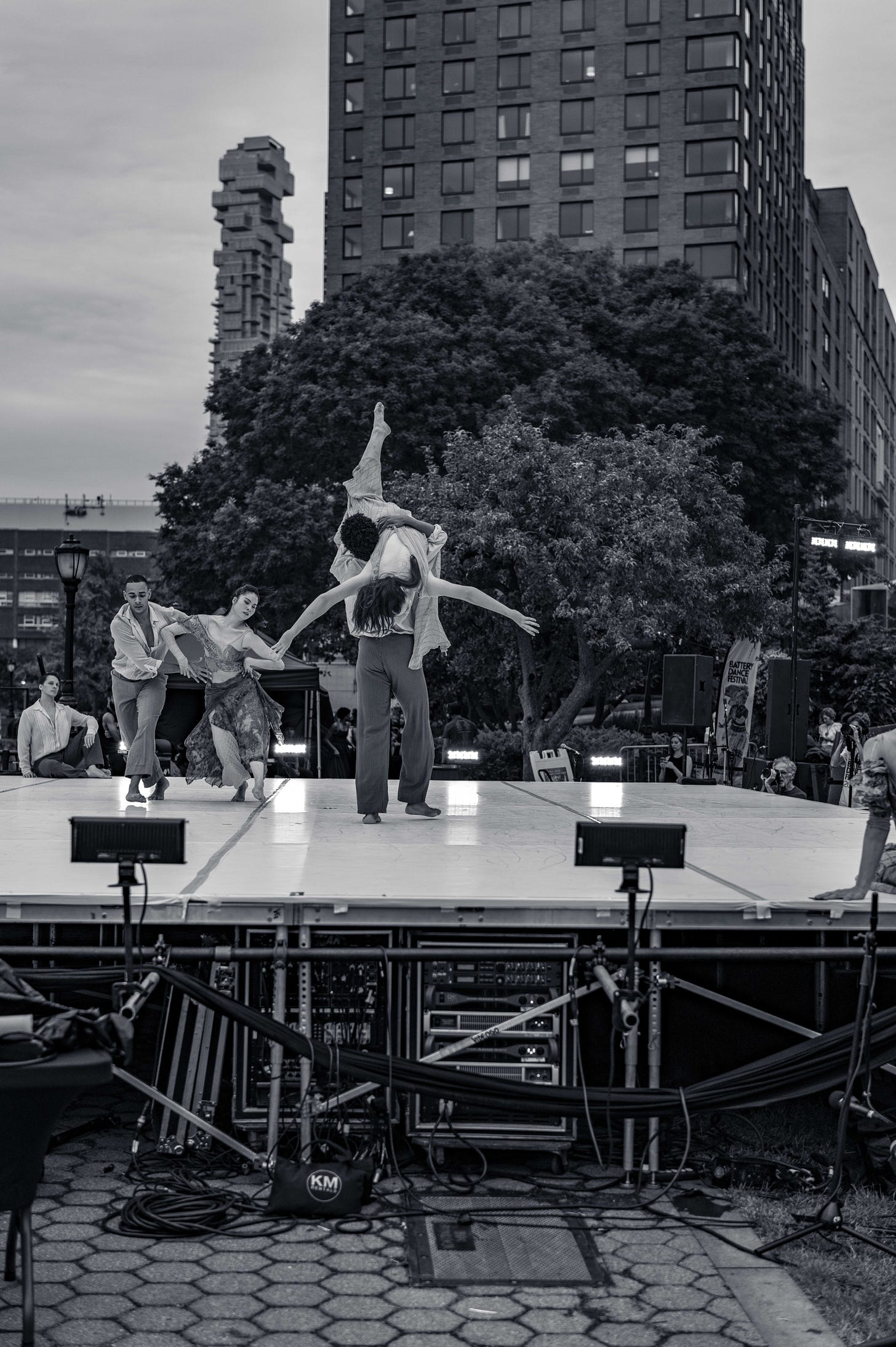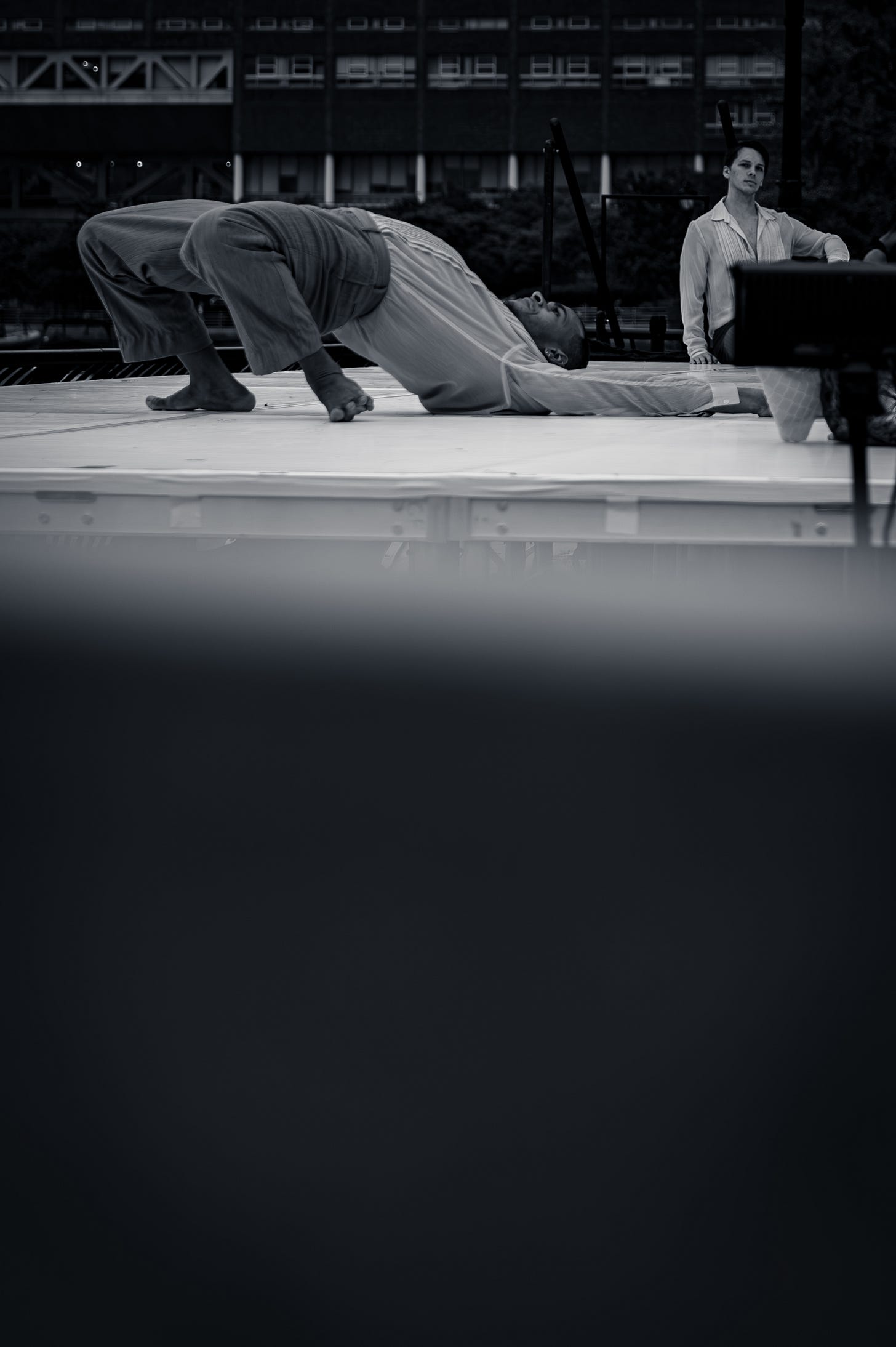Negative Space and Fancy Footwork
You like what you like. Shrug emoji.
I bought a DSLR about 15 years ago. Everything in auto. No idea or desire to truly understand what it did. I just wanted to marvel at the resolution of the photos. I took it to Virginia Water Lake on the first day.* I didn’t know what I was doing, just walking around with an expensive point-and-shoot. But even then, I found myself drawn to images of, well…nothing. Blank space. I didn’t think about it then, and I don’t really think about it now. Even if the camera isn’t in auto, I am.
Last week I wrote about negative space. How what you leave out of a frame can be just as important as what you include. This week, I’m sticking with that theme, but with a bit of fancy footwork. Less about space itself, more about how you move your feet until the shot feels right.
The images all come from a public dance event in Battery Park, New York. I’ll also share some other images that give me the same vibe. (I always feel too old to be using words like vibe)
A caveat. I don’t tend to check the screen on the camera when I shoot. I shoot what feels right. Often, it isn’t right, but I move around, try different angles, experiment, and then check the results later. And that’s the main point here…move your feet. I’ll explain why below.
First up, a miss — but I’m finding my position.
At public events, you are often surrounded by multiple cameras all vying for the “best spot.” Sometimes the best spot is opposite of what is obvious.
Photographers, sometimes against their own will, are often pushed into a small section in front of the stage. But at events where there are no sections, you have more freedom to decide what suits your style.
In the above image, I’ve circled the elements that I’m personally not happy with as distractions. Crowd crossing with performers, photographers huddled together, limbs just out of shot, wiring on display, etc.
The main reason I moved to the side of the stage was because I wanted an interesting backdrop. In this case, the city. The other photographers in this image are facing a harbor. However, with the stage elevated and the water and boats below stage level, there would have been nothing that indicated where these performers were or why this performance was unique.
That works if you’re just there to shoot the performers. But as a street photographer, anything that can highlight the uniqueness of a scene can be the difference between a good photo and a great one.
Closer, but not quite.
Here I’m moving away from the crowd. I love shooting performances where you can see expressions on the crowd’s faces. Still, if the angle doesn’t allow for a clear separation between the performance and the viewers, I sacrifice something.
Here, I have a backdrop (albeit out of focus in this image), the Jenga building, so we know we’re in New York. I have some interesting performance angles, but still too much noise around the stage.
Giving up on the whole view.
For this one, I’m starting to use a barrier in front of me to cut out the underside of the stage. I have most of the components I think I need for a good shot. Performers, wires blocked, the NYC backdrop.
Yet when I look at this photo, I think: “Well, why not just crop the bottom part of the stage out?”
Where’s the fun in that!?
The one that did it for me.
As with my shots around the Jokoro in Tokyo, I feel that a search for emotion or some drama trumps everything.
The performer is positioned on the closest side of the stage to me. So I had to give up on the backdrop for this image. I wanted to block out the wiring under the stage, but including both the Jenga building and the wiring would have obscured the first part of the stage. So I opted to lose the building.
Small shifts like these can help when you find yourself in a similar situation. Moving around to find a unique shooting spot, finding ways to incorporate place as a subject, using the environment to draft in negative space, rather than thinking, shoot now, fix later.
I’m curious — how do you approach it? Do you walk and experiment, or do you prefer to settle in one spot and wait for the moment to come to you?
Until next week, happy shooting.
Paul
*FYI, I tried to locate those images, and guess what? I deleted them. A lesson for another day.








I love to hear about the choices and decisions made, the context makes the images come to life. Also, you are younger than me and I use “vibe”, so, carry on!!
I love these images! You capture people so incredibly well